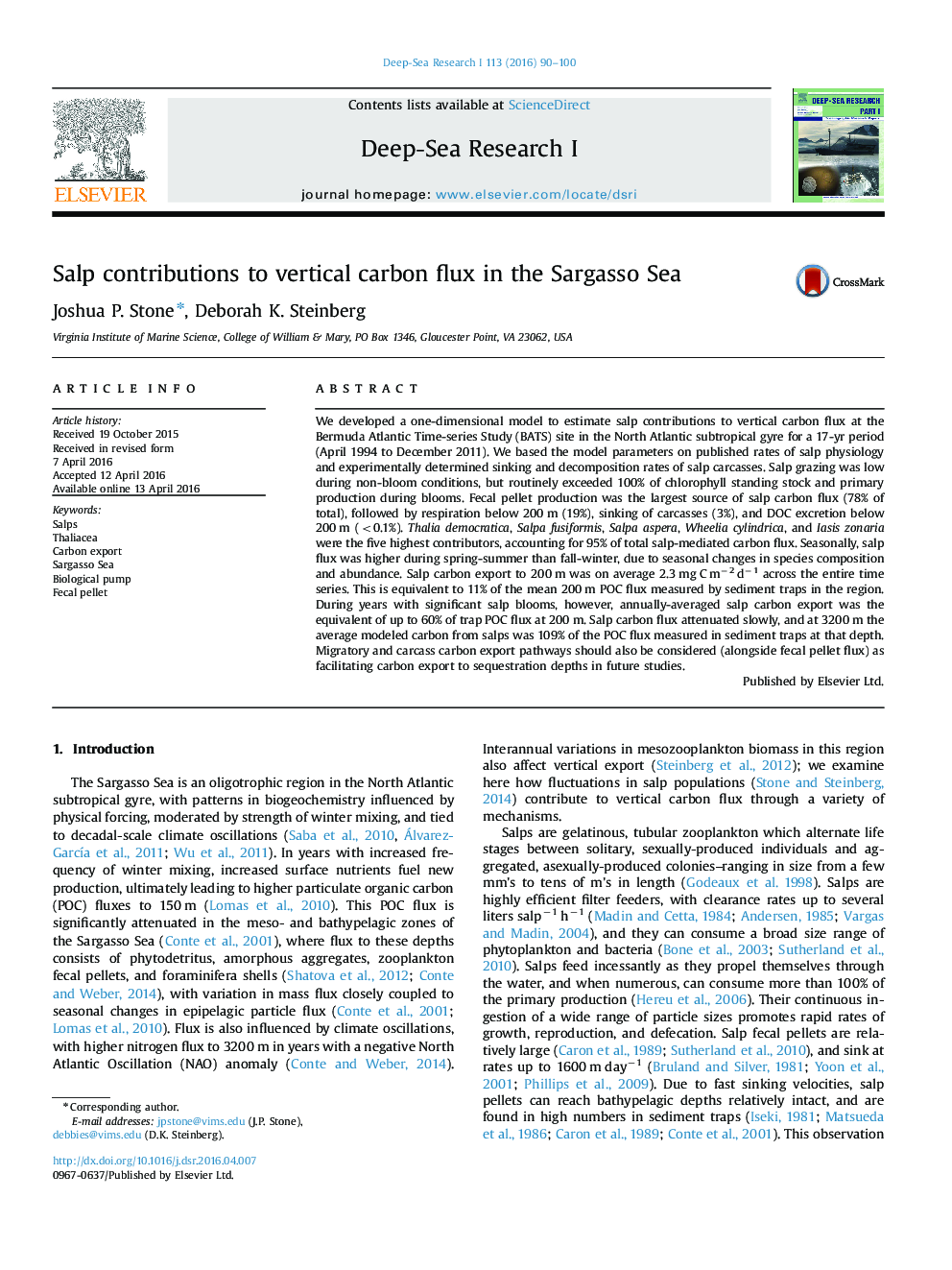| کد مقاله | کد نشریه | سال انتشار | مقاله انگلیسی | نسخه تمام متن |
|---|---|---|---|---|
| 6383370 | 1626317 | 2016 | 11 صفحه PDF | دانلود رایگان |
- Modeled salp C export is on average equal to 10% of the 200Â m sinking POC flux in the Sargasso Sea.
- During salp bloom periods, salp C export is high (accounting for 79% of total 200Â m salp POC flux across the time series).
- Fecal pellet production is the largest source of exported salp C.
- Salp C export is equivalent to sinking POC flux measured at 3200Â m.
We developed a one-dimensional model to estimate salp contributions to vertical carbon flux at the Bermuda Atlantic Time-series Study (BATS) site in the North Atlantic subtropical gyre for a 17-yr period (April 1994 to December 2011). We based the model parameters on published rates of salp physiology and experimentally determined sinking and decomposition rates of salp carcasses. Salp grazing was low during non-bloom conditions, but routinely exceeded 100% of chlorophyll standing stock and primary production during blooms. Fecal pellet production was the largest source of salp carbon flux (78% of total), followed by respiration below 200 m (19%), sinking of carcasses (3%), and DOC excretion below 200 m (<0.1%). Thalia democratica, Salpa fusiformis, Salpa aspera, Wheelia cylindrica, and Iasis zonaria were the five highest contributors, accounting for 95% of total salp-mediated carbon flux. Seasonally, salp flux was higher during spring-summer than fall-winter, due to seasonal changes in species composition and abundance. Salp carbon export to 200 m was on average 2.3 mg C mâ2 dâ1 across the entire time series. This is equivalent to 11% of the mean 200 m POC flux measured by sediment traps in the region. During years with significant salp blooms, however, annually-averaged salp carbon export was the equivalent of up to 60% of trap POC flux at 200 m. Salp carbon flux attenuated slowly, and at 3200 m the average modeled carbon from salps was 109% of the POC flux measured in sediment traps at that depth. Migratory and carcass carbon export pathways should also be considered (alongside fecal pellet flux) as facilitating carbon export to sequestration depths in future studies.
Journal: Deep Sea Research Part I: Oceanographic Research Papers - Volume 113, July 2016, Pages 90-100
